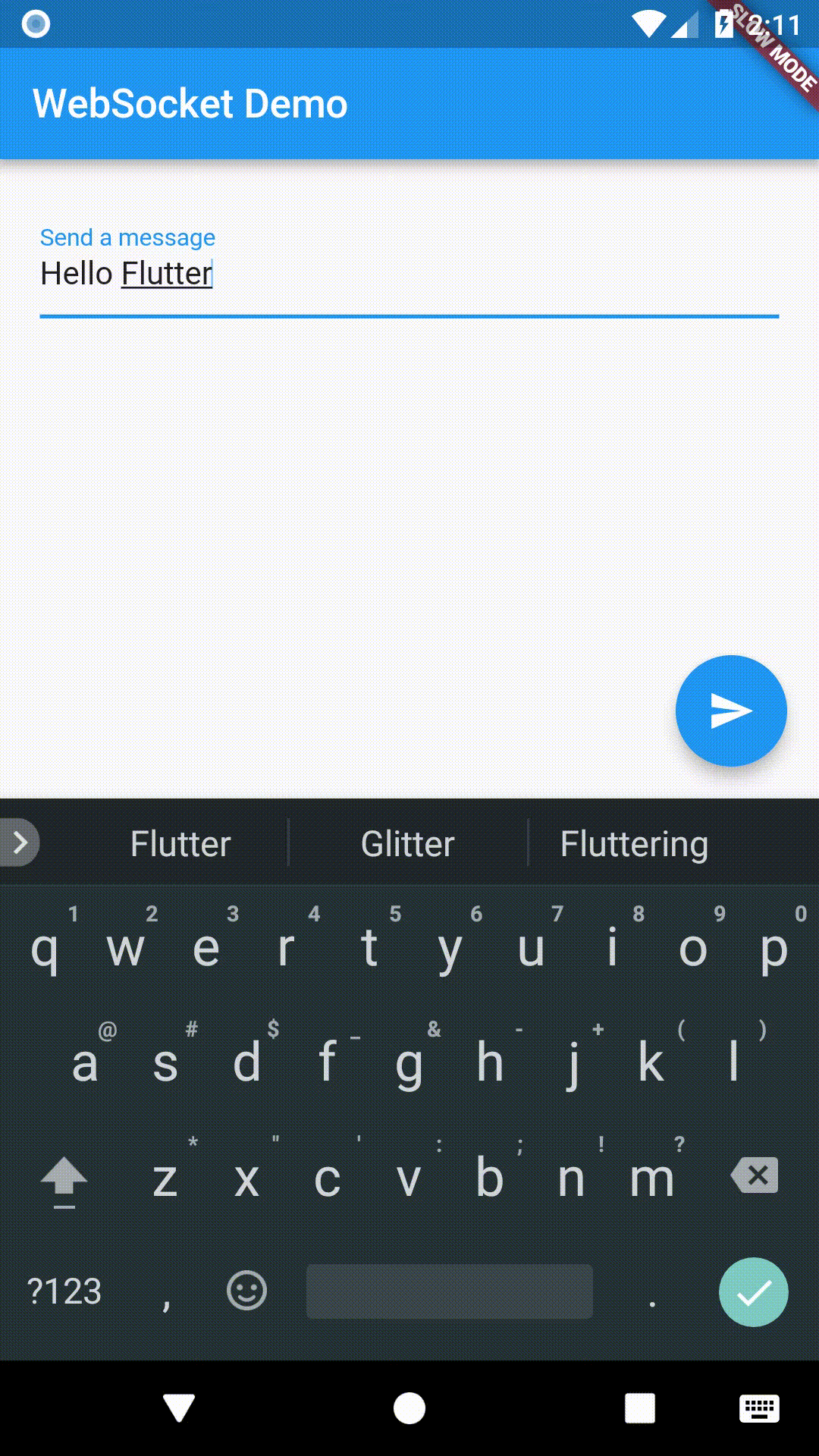Communicate with WebSockets
In addition to normal HTTP requests, you can connect to servers using WebSockets. WebSockets allow for two-way communication with a server without polling.
In this example, connect to a test WebSocket server sponsored by Lob.com. The server sends back the same message you send to it. This recipe uses the following steps:
- Connect to a WebSocket server.
- Listen for messages from the server.
- Send data to the server.
- Close the WebSocket connection.
1. Connect to a WebSocket server
#The web_socket_channel package provides the tools you need to connect to a WebSocket server.
The package provides a WebSocketChannel that allows you to both listen for messages from the server and push messages to the server.
In Flutter, use the following line to create a WebSocketChannel that connects to a server:
final channel = WebSocketChannel.connect(
Uri.parse('wss://echo.websocket.events'),
);2. Listen for messages from the server
#Now that you've established a connection, listen to messages from the server.
After sending a message to the test server, it sends the same message back.
In this example, use a StreamBuilder widget to listen for new messages, and a Text widget to display them.
StreamBuilder(
stream: channel.stream,
builder: (context, snapshot) {
return Text(snapshot.hasData ? '${snapshot.data}' : '');
},
),How this works
#The WebSocketChannel provides a Stream of messages from the server.
The Stream class is a fundamental part of the dart:async package. It provides a way to listen to async events from a data source. Unlike Future, which returns a single async response, the Stream class can deliver many events over time.
The StreamBuilder widget connects to a Stream and asks Flutter to rebuild every time it receives an event using the given builder() function.
3. Send data to the server
#To send data to the server, add() messages to the sink provided by the WebSocketChannel.
channel.sink.add('Hello!');How this works
#The WebSocketChannel provides a StreamSink to push messages to the server.
The StreamSink class provides a general way to add sync or async events to a data source.
4. Close the WebSocket connection
#After you're done using the WebSocket, close the connection:
channel.sink.close();Complete example
#import 'package:flutter/material.dart';
import 'package:web_socket_channel/web_socket_channel.dart';
void main() => runApp(const MyApp());
class MyApp extends StatelessWidget {
const MyApp({super.key});
@override
Widget build(BuildContext context) {
const title = 'WebSocket Demo';
return const MaterialApp(title: title, home: MyHomePage(title: title));
}
}
class MyHomePage extends StatefulWidget {
const MyHomePage({super.key, required this.title});
final String title;
@override
State<MyHomePage> createState() => _MyHomePageState();
}
class _MyHomePageState extends State<MyHomePage> {
final TextEditingController _controller = TextEditingController();
final _channel = WebSocketChannel.connect(
Uri.parse('wss://echo.websocket.events'),
);
@override
Widget build(BuildContext context) {
return Scaffold(
appBar: AppBar(title: Text(widget.title)),
body: Padding(
padding: const EdgeInsets.all(20),
child: Column(
crossAxisAlignment: CrossAxisAlignment.start,
children: [
Form(
child: TextFormField(
controller: _controller,
decoration: const InputDecoration(labelText: 'Send a message'),
),
),
const SizedBox(height: 24),
StreamBuilder(
stream: _channel.stream,
builder: (context, snapshot) {
return Text(snapshot.hasData ? '${snapshot.data}' : '');
},
),
],
),
),
floatingActionButton: FloatingActionButton(
onPressed: _sendMessage,
tooltip: 'Send message',
child: const Icon(Icons.send),
), // This trailing comma makes auto-formatting nicer for build methods.
);
}
void _sendMessage() {
if (_controller.text.isNotEmpty) {
_channel.sink.add(_controller.text);
}
}
@override
void dispose() {
_channel.sink.close();
_controller.dispose();
super.dispose();
}
}
Unless stated otherwise, the documentation on this site reflects the latest stable version of Flutter. Page last updated on 2025-02-12. View source or report an issue.